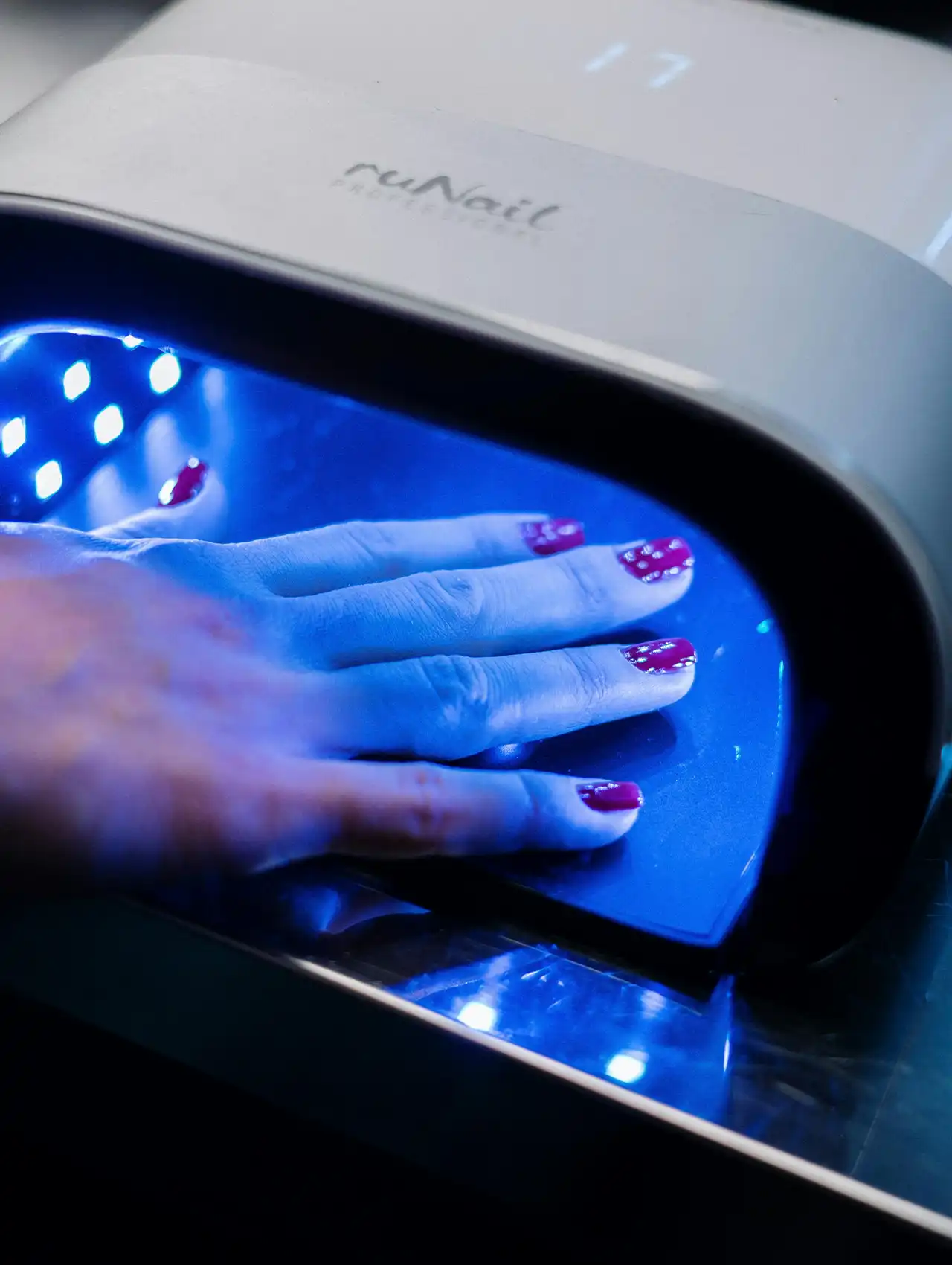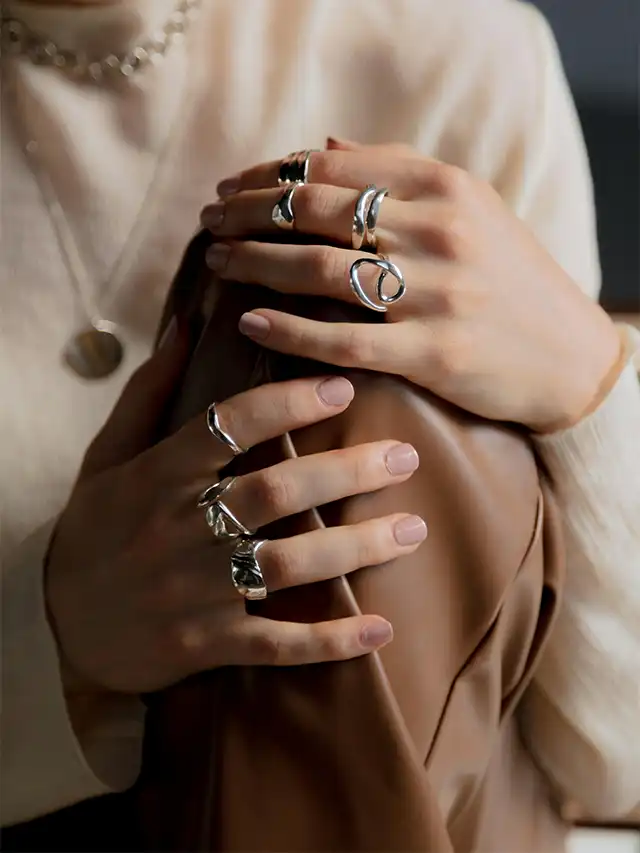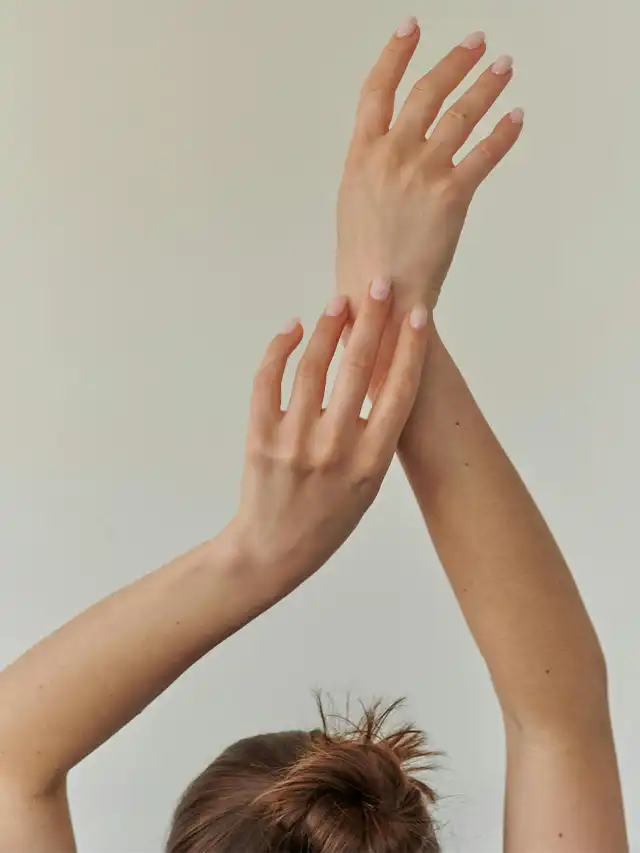Last Updated on September 16, 2025
Clean nails are more than just a beauty statement—they’re a reflection of personal care, hygiene, and effortless style. This guide explores clean nail designs, essential nail hygiene tips, and how to achieve a healthy, minimalist manicure that’s perfect for any occasion. Whether you’re going natural or booking a salon visit, you’ll find everything you need to maintain strong, polished nails without toxic products or over-the-top designs.
- Clean Nails: Introduction to Nail Polish Essentials
- Eco-Conscious Conversation: Beyond Toxic and Non-Toxic Labels in Consumer Products
- Understanding Nail Polish Ingredients
- Exploring Nail Polish Formulations
- Decoding Nail Polish Labeling Requirements
- The Truth Behind ‘Free-From’ Claims
- Advancements in Nail Polish Technology
- Safety Tips for Using Nail Polish
- Conclusion: Making Informed Choices in Nail Care
At Successible Life, we believe that beauty starts with wellness—and clean nails are a perfect example. Our editorial team, in collaboration with dermatologists and certified nail professionals, has created this guide to highlight clean nail trends, best practices in nail hygiene, and products free from harsh chemicals. Every recommendation is based on hands-on testing and professional advice, ensuring your nails stay healthy, strong, and stylish. Whether you’re a fan of minimalist looks or simply value safe, natural beauty routines, this guide helps you find the best nail salon offering clean manicures and empowers you to create the best nail designs at home with confidence.
When choosing cosmetics like nail polish, it’s important to understand the difference between toxic, non-toxic, and eco-friendly products.
Non-toxic nail polish brands avoid harmful chemicals, ensuring safer usage and reducing health risks. These brands also prioritize eco-friendly practices, using sustainable materials and reducing environmental impact.
By choosing non-toxic nail polish options, you make a healthier, more responsible choice for your clean nails and the planet. Non-toxic, clean nails are not only safer but also support sustainability. Clean nails reflect your commitment to health and the environment.
By selecting non-toxic products, you’re ensuring clean nails that are free from harsh chemicals. Choosing these options promotes the overall health of your clean nails while also being eco-conscious.
Clean Nails: Introduction to Nail Polish Essentials
Clean nails are not only a canvas for beautiful art but also reflect personal hygiene and health. Nail care is key, as healthy nails ensure better polish adhesion and longevity. Before applying polish, it’s essential to remove dirt, oil, and old polish for a smooth application.
@cirquecolors Come with me to find out how our nail polish is made! 💅😮👩🔬 #nailpolish #nails #bts #behindthescenes #satisfyingvideo #nailinspo #trendynails #trendalert #nailideas #nailart #nailtutorial #viralvideo #trendy #rednails #teaser #pinterestaesthetic #fypシ #nailtrends #easynails #naildesigns ♬ new jeans – ★
When selecting nail products, choose those that enhance beauty while supporting nail health.
Opt for formulas with vitamins and oils to nourish and hydrate nails. The rise of non-toxic and eco-friendly polishes shows a growing focus on products that support both aesthetics and hygiene, offering a cleaner, healthier manicure.
Eco-Conscious Conversation: Beyond Toxic and Non-Toxic Labels in Consumer Products
Biodegradable
Discussing whether a product and its packaging are biodegradable can be an important aspect of their eco-friendliness. Biodegradable materials break down naturally and reduce waste, complementing the eco-friendly narrative.
Sustainable Sourcing
This refers to how the ingredients are sourced, focusing on whether they are renewable and harvested in a way that does not deplete or harm the environment.
Sustainable sourcing is crucial for maintaining ecological balance and supports the eco-friendly claim.
Health Impact
Beyond the simple dichotomy of toxic versus non-toxic, discussing the specific health impacts of certain chemicals can provide depth. This could include potential effects on reproductive health, respiratory systems, or long-term carcinogenicity, which are often concerns with toxic ingredients.
Regulatory Compliance
Mentioning how these products align with current regulations and standards can also be insightful. Different regions have varying standards for what constitutes toxic and non-toxic, and discussing these can help clarify why certain products are labeled in one way or another.
Animal Testing
The cruelty-free aspect often aligns closely with non-toxic and eco-friendly products. Products that do not test on animals and are certified cruelty-free appeal to ethical consumers and are often considered more environmentally and socially responsible.
Carbon Footprint
Discussing the carbon footprint of producing, packaging, and distributing these products can also be tied into the discussion on eco-friendliness. Lower carbon footprints are indicative of more sustainable practices.
Understanding Nail Polish Ingredients
Nail polish is a mix of chemistry and art, designed for both performance and aesthetics. It contains solvents, pigments, resins, and plasticizers, each with a unique role.
Solvents like ethyl and butyl acetate dissolve ingredients for smooth application and evaporate as the polish dries.
Pigments add color, from iron oxides for reds to complex, non-toxic compounds for vibrant shades. Resins, such as tosylamide/formaldehyde resin, enhance adhesion and shine, though many brands now use safer alternatives to minimize health risks.
@leh.nailsbeauty What names to actually look out for when you’re looking into gel polishes and their ingredients. This wasn’t covered in my nail course so I’m hoping this helps others as I had no clue that 2-hema was different to bis-hema #gelpolish #naileducation #nailtechs #gelnailpolish ♬ original sound – LEH. Nails | Allergy Awareness
Plasticizers like dibutyl phthalate (DBP) make nail polish flexible and chip-resistant. However, due to health concerns, the industry is shifting to phthalate-free alternatives like acetyl tributyl citrate.
Nail polish technology now prioritizes long-lasting, eco-friendly formulas, with water-based and bio-sourced options gaining popularity.
Consumers who understand these ingredients can choose safer, more sustainable products that align with their health and lifestyle preferences.
Exploring Nail Polish Formulations
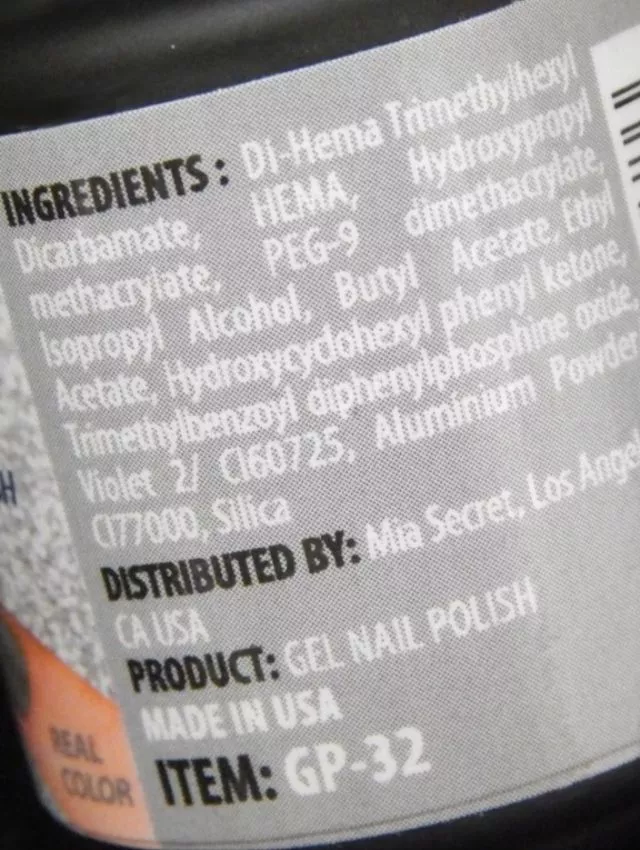
Nail polish has evolved from simple varnishes to advanced formulations that enhance aesthetics, durability, and safety. This progress is driven by technology and consumer demand for effective, conscientious products.
A typical nail polish consists of a film-forming base, solvents, colorants, and additives. The base, often nitrocellulose, determines texture and adherence, while solvents like ethyl acetate ensure smooth application and quick drying.
Colorants provide diverse hues, with innovations in pigments improving both vibrancy and eco-friendliness. Additives, such as UV stabilizers and plasticizers, enhance longevity, flexibility, and consistency.
The shift toward non-toxic formulas has led to “3-Free” to “10-Free” polishes, eliminating harmful chemicals for safer use. Water-based alternatives offer odorless, solvent-free options, ideal for sensitive users and easy removal.
Understanding these formulations allows consumers to make informed choices, aligning beauty preferences with health and sustainability.
Decoding Nail Polish Labeling Requirements
When it comes to nail polish categorized by their “clean” and non-toxic materials, the industry often uses several designations to indicate the level of safety and environmental friendliness of the products. Here’s a breakdown of common types based on their formulations:
- 3-Free Nail Polish
- What it avoids: Dibutyl phthalate (DBP), formaldehyde, and toluene.
- Why it’s better: These chemicals are often avoided due to concerns over health effects like allergies, irritations, and long-term organ damage.
- 5-Free Nail Polish
- What it avoids: The three ingredients listed above, plus formaldehyde resin and camphor.
- Why it’s better: Eliminates additional chemicals that can cause skin irritations and headaches.
- 7-Free Nail Polish
- What it avoids: The five ingredients listed above, plus ethyl tosylamide and xylene.
- Why it’s better: Further reduces exposure to potential carcinogens and toxins that can affect the nervous system.
- 9-Free Nail Polish
- What it avoids: The seven ingredients listed above, plus parabens and acetone.
- Why it’s better: Avoids preservatives linked to endocrine disruption and a solvent that is harsh on skin and nails.
- 10-Free Nail Polish
- What it avoids: The nine ingredients listed above, plus animal-derived ingredients.
- Why it’s better: Suitable for vegans and those looking to avoid all major harmful chemicals and animal cruelty.
- 12-Free and Beyond
- What it avoids: Includes avoidance of additional ingredients such as phthalates, glycol ethers, and more.
- Why it’s better: These polishes are at the forefront of non-toxic beauty, striving to eliminate all known harmful chemicals.
Each step up in the “free” chain indicates a product formulated without certain harmful chemicals, offering a cleaner, more eco-friendly option for consumers.
The choice of product often depends on individual health concerns, ethical considerations, and the level of exposure one is comfortable with.
The Truth Behind ‘Free-From’ Claims
‘Free-From’ claims are a growing trend in the nail polish industry, highlighting the absence of certain chemicals. Labels like ‘3-Free’, ‘5-Free’, or ’10-Free’ indicate the exclusion of ingredients flagged for health risks, such as formaldehyde, DBP, and toluene.
As demand for safer products rises, brands are eliminating even more harmful substances, aligning with the shift toward transparency and health-conscious beauty.
However, ‘Free-From’ doesn’t always mean completely safe—alternative ingredients may still pose risks. Consumers should research ingredient lists and choose brands that prioritize both safety and efficacy for truly clean beauty.
Advancements in Nail Polish Technology
Nail polish technology has evolved with innovations that enhance durability, safety, and sustainability.
Clean nails benefit from quick-dry and long-lasting formulas that use advanced polymers and UV/LED curing for a chip-resistant, glossy finish. Eco-friendly options, like water-based polishes, eliminate harsh solvents, reducing toxicity and environmental impact for clean nails.
Bio-sourced ingredients from renewable resources further promote sustainability, ensuring clean nails stay healthy.
Smart polishes add interactive elements, changing color with temperature or light, while micro-encapsulation delivers nourishing ingredients for healthier, cleaner nails. These advancements offer beauty, convenience, and a more sustainable approach to clean nail care, meeting modern consumer demands.
Safety Tips for Using Nail Polish
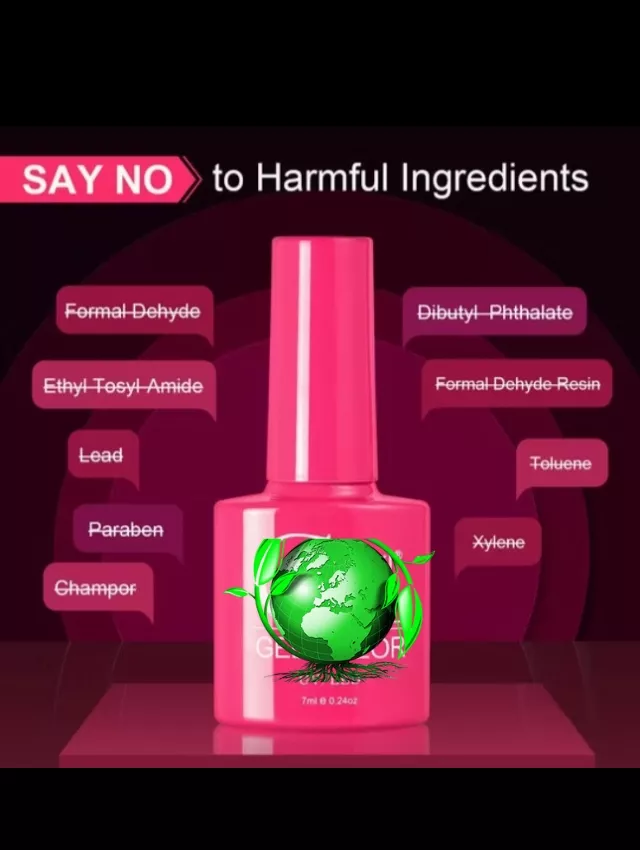
Make clean nails a fun and safe part of your beauty routine by following key safety tips. Choose “Free-From” polishes without harsh chemicals like formaldehyde, DBP, and toluene, and avoid expired products to maintain clean nails.
Always apply a base coat to prevent staining and a top coat to extend wear, ensuring clean nails stay polished longer. Use polish in a well-ventilated space to minimize fume inhalation, and clean any skin contact promptly to keep nails looking their best.
Opt for acetone-free removers to protect clean nails from dryness, and moisturize after use. Give clean nails occasional breaks to prevent damage and keep them healthy. These steps ensure a beautiful, long-lasting, and safe manicure while maintaining clean nails at all times.
Conclusion: Making Informed Choices in Nail Care
In conclusion, making informed choices is key to maintaining healthy, beautiful nails and clean nails. Understanding nail polish ingredients, “Free-From” claims, and safety tips empowers you to select products that enhance nail beauty while protecting your health and promoting clean nails.
Choosing non-toxic, eco-friendly options supports well-being and sustainability, ensuring clean nails. Regular care helps prevent damage, improve manicure durability, and maintain clean nails.
Supporting transparency and safer products can influence industry standards, leading to better beauty solutions for clean nails. Prioritizing these practices makes your beauty routine both aesthetically pleasing and ethically mindful, ensuring a healthier lifestyle alongside clean nails.
Topcoat Nail Polishes 2025: Safe & Stunning Alternatives After Europe’s Bold Ban
Blooming Gel Nails: The Dreamy Watercolor-Inspired Manicure You Need to Try
Clean Nails 101: The Ultimate Guide to the Healthiest, Least Toxic & Safest Manicure Option
Clean Girl Nails: The Effortless Manicure Trend That’s Taking Over Your Feed | 2025
What is the best thing to clean your nails with?
A nail brush with gentle bristles works well for cleaning beneath your nails. Scrub each nail lightly with a wet brush and a small amount of soap. Alternative Tools: To carefully scrape away any debris, use a toothbrush or a wooden stick, such as an orange stick, if you don’t have a nail brush.
What is the healthiest manicure to get?
Consider a simple manicure using “5-free” or “10-free” nail paint for the healthiest manicure, or choose gel or dip powder manicures with regular maintenance and breaks to prevent damage.
Does vinegar clean fingernails?
Many home care products use vinegar, as is well known. As a result, the white vinegar treatment is an excellent way to restore strong, glossy nails. Yes, this product shines and disinfects, especially on brittle nails.
Meet Isabela Márquez del Sol – Nail Art Enthusiast & Spa Reviewer
Isabela Márquez del Sol is a recognized voice in the beauty and self-care industry, best known for her vibrant passion for nail design, manicure trends, and luxury nail salon experiences. With years of hands-on experience exploring top-rated nail spas and providing honest, insightful spa reviews, Isabela has become a trusted resource for those seeking expert guidance on the best nail salons near me and cutting-edge nail art inspiration.
As a dedicated beauty content creator and spa reviewer, she combines her love for detailed manicures with a commitment to sharing her knowledge of professional nail care, product recommendations, and spa-quality treatments. Whether testing out the latest gel nail trends or highlighting clean and affordable manicure salons, Isabela brings an eye for detail and a passion for quality that readers can rely on.
Her content aligns with Google's EEAT principles, delivering first-hand expertise, authentic experiences, and trustworthy reviews that help thousands of beauty enthusiasts make confident choices about their nail care and salon services.
Follow Isabela for updates on the best manicure spots, nail trends, spa experiences, and everything you need to elevate your nail game with style and substance.
- Isabela Marquez del Solhttps://successiblelife.com/author/isabela-marquez-del-sol/
- Isabela Marquez del Solhttps://successiblelife.com/author/isabela-marquez-del-sol/
- Isabela Marquez del Solhttps://successiblelife.com/author/isabela-marquez-del-sol/
- Isabela Marquez del Solhttps://successiblelife.com/author/isabela-marquez-del-sol/


